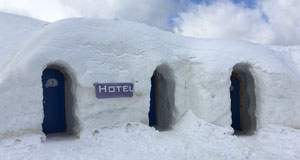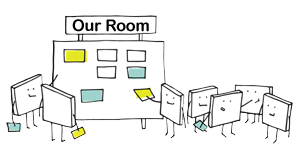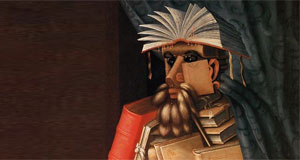Personification Stories
Students will personify an object and write a story as part of an online book or animated adventure. The story will use conflict, experiences, and situations to help the viewer imagine what it might be like to be a particular object.
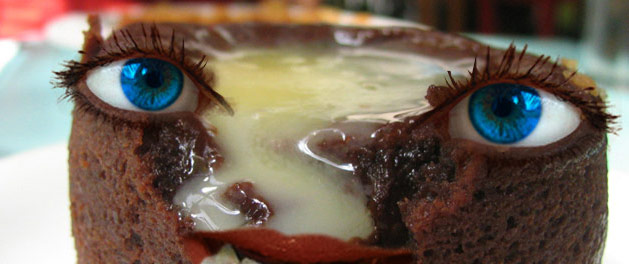
Task
Hey diddle, diddle, the cat and the fiddle…Personification is a figure of speech in which human qualities are given to objects, animals, or ideas. For example: the fire breathed hot in our faces and its flames grabbed at our clothes, or the chocolate cake is calling my name. Personification can make your writing much more interesting.
In this project, you will personify an animal or object and develop your story into an online book or animated cartoon.
Engage
Nursery rhymes, fairy tales, fables, and children‘s stories commonly personify animals. When you give human characteristics to animals, it is called anthropomorphism. Your students have probably heard of the three bears that eat porridge and sleep in their beds or the fable of the Tortoise and the Hare. You may have even read Fantastic Mr. Fox by Roald Dahl.
Revisit these stories or others your students may be familiar with. You might also want to share the work of Lewis Carroll in his poem The Walrus and the Carpenter or The Adventures of Alice in Wonderland. Remember the white rabbit and Alice playing croquet with a deck of cards?
After exploring examples of personification, work with your students to personify an object in your classroom. Brainstorm human traits that can be applied to it. Start by identifying parts of it that are similar to human body parts. Then, brainstorm feelings it might have about itself or how it is used. Ask students to become the object and answer these prompting questions:
- What/how do you see?
- What/how do you hear?
- Where do you live?
- What are you afraid of?
- What do you dream of?
- What are you good at?
- What do you hate to do?
- How do you feel about the people or objects you meet?
Create
Have individual students, or a small team, choose an object to personify. Ask students to brainstorm ways to personify the object. You might ask them to answer the same questions you did as a class.
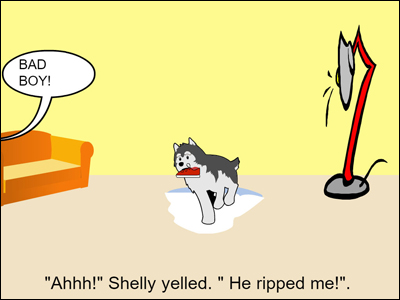
Students should use the object‘s feelings or fears they have brainstormed to develop the conflict that will drive their story and begin writing. You may have them scaffold work or continue brainstorming by identifying character traits, determining setting, and codifying the plot diagram or at minimum beginning, middle, and end. Have students share their ideas and drafts with their peers for feedback and review and then work on their revisions.
Choose the type of product you want students to create, such as a printed book, interactive story, cartoon animation, claymation video, or better yet, allow them to choose the product they believe will most effectively convey their story.
Have students translate their written story into a visual map or project storyboard. This will help them determine how best to convey the story through individual pages or scenes. Have students create an illustration of the object, or build a tangible character from modeling clay or other materials.
Students can capture still images for stopmotion, create pages that combine text, illustration, and narration, or take video to build their story.
Share
Have the students present their story or animated short to the rest of the class. Share the stories and animations on your school web site, during morning announcements, or in your school/community library. You may also be able to share them on your local access television station as a celebration of student learning.
You could even turn this project into a parent night or community event by asking students to write personification stories along a conservation theme like Earth Day.
Assessment
After you have read and shared examples of personification, you can begin assessing student understanding as the entire class works together to personify an object.
Use the brainstorm and written story to assess a student's ability to personify. You will also want to check in with individuals or listen to each group's process to help you evaluate their skill at identifying character, setting, and plot, as well as how creativity they have personified the object.
The final stories and animation will help you evaluate how well students are able to translate their brainstormed traits and emotions into effectively personifying the object.
Resources
Lewis Carroll, The Walrus and the Carpenter
Lewis Carroll, Alice‘s Adventures in Wonderland
Emily Dickinson, The Train
Standards
Common Core Standards for for English Language Arts - Grade 6
CCSS.ELA-LITERACY.L.6.5
Demonstrate understanding of figurative language, word relationships, and nuances in word meanings.
CCSS.ELA-LITERACY.L.6.5.A
Interpret figures of speech (e.g., personification) in context.
Common Core Anchor Standards for for English Language Arts - Grades K-6
Literacy Theme
Demonstrate understanding of figurative language, word relationships, and nuances in word meanings.
5. Interpret figures of speech (e.g., personification) in context.
Reading Theme
Craft and Structure
4. Interpret words and phrases as they are used in a text, including determining technical, connotative, and figurative meanings, and analyze how specific word choices shape meaning or tone.
6. Assess how point of view or purpose shapes the content and style of a text.
Writing Theme
Production and Distribution of Writing
4. Produce clear and coherent writing in which the development, organization, and style are appropriate to task, purpose, and audience.
Range of Writing
10. Write routinely over extended time frames (time for research, reflection, and revision) and shorter time frames (a single sitting or a day or two) for a range of tasks, purposes, and audiences
Speaking and Listening Theme
Presentation of Knowledge and Ideas
4. Present information, findings, and supporting evidence such that listeners can follow the line of reasoning and the organization, development, and style are appropriate to task, purpose, and audience.
Language Theme
Vocabulary Acquisition and Use
5a. Demonstrate understanding of figurative language, word relationships, and nuances in word meanings. Interpret figures of speech (e.g., personification) in context.
ISTE NETS for Students 2016:
6. Creative Communicator
Students communicate clearly and express themselves creatively for a variety of purposes using the platforms, tools, styles, formats and digital media appropriate to their goals. Students:
a. choose the appropriate platforms and tools for meeting the desired objectives of their creation or communication.
b. create original works or responsibly repurpose or remix digital resources into new creations.
c. communicate complex ideas clearly and effectively by creating or using a variety of digital objects such as visualizations, models or simulations.
d. publish or present content that customizes the message and medium for their intended audiences.




